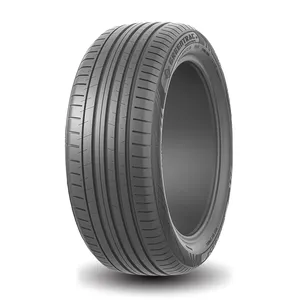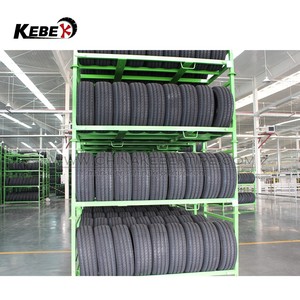
All categories
Featured selections
Trade Assurance
Buyer Central
Help Center
Get the app
Become a supplier

(847 products available)














































There are two main types of PCR tyre 205 70 15c, including:
Here are the specifications of the PCR tyre:
Tyre width
The tyre's width is approximately 205 millimetres. The tyre's contact with the road increases traction and braking performance. On the other hand, it reduces fuel efficiency and noise.
Aspect ratio
The aspect ratio is 70, meaning the tyre's sidewall height is 70% of its width. A taller sidewall provides a comfortable ride on uneven surfaces.
Tyre diameter
The tyre's diameter is 15 inches, indicating the size of the wheel it can fit. Larger tyres improve handling and cornering performance, while smaller tyres enhance fuel efficiency.
Load index
The load index is 97, meaning each tyre can support up to 730 kg. This feature is crucial for heavy vehicles that require more load-carrying capacity.
Speed rating
The tyre has a speed rating of Q, indicating it can reach speeds of up to 160 km/h. This speed is suitable for commercial vehicles that do not require high-speed performance.
Tread pattern
The tread pattern features a symmetrical design with wide grooves and a continuous centre rib. This design improves traction, stability, and noise reduction.
Compound
The tyre uses a silica-based compound that increases grip on wet and dry roads. The compound enhances the tyre's wear resistance and longevity.
Here are the general instructions for maintaining tyres 205 70 15C:
Check the tyre pressure
Check the tyre pressure with a pressure gauge at least once a month and before long trips. Ensure the tyres are inflated to the manufacturer's recommended pressure. Over-inflated tyres wear unevenly and increase the risk of blowouts. Under-inflated tyres reduce fuel efficiency and affect handling.
Check the tread depth
Monitor the tread depth using a tread depth gauge or a simple coin. Ensure the tread depth meets the legal requirements and provides sufficient grip. Replace the tyres when the tread depth is worn out.
Check for damage
Check the tyres regularly for cuts, cracks, punctures, and stones stuck in the tread. Remove any debris and repair or replace damaged tyres immediately.
Rotate the tyres
Rotate the tyres every 5,000-10,000 km to ensure even wear. Move the front tyres to the rear and the rear tyres to the front. The tyre rotation improves vehicle stability, traction, and safety.
Align and balance the wheels
Have the wheels aligned and balanced at least once a year or if the vehicle experiences vibrations or pulls. Wheel alignment and balancing improve handling, ride comfort, and tyre life.
Proper storage
If the tyres are not in use, store them in a cool, dry place away from direct sunlight, heat sources, and chemicals. Proper tyre storage prevents rubber deterioration and extends tyre life.
Avoid overloading
Do not overload the vehicle beyond its rated capacity. Overloading strains the tyres, leading to increased wear, reduced fuel efficiency, and a higher risk of tyre failure.
Load Capacity:
The tyres' load-carrying capacity is considered. The number on the sidewall of a tyre indicates its load rating. Ensure the vehicle's load and the tyre selection match.
Speed Rating:
The speed rating, which indicates the maximum speed at which the tyre can operate safely, is also taken into account. The speed rating should match or exceed the vehicle's maximum speed.
Aspects Ratio:
The tyre's height-to-width ratio is considered. Altering this can affect the vehicle's handling, ride height, and aesthetics.
Rolling Circumference:
The rolling circumference, which affects the vehicle's gear ratios and speedometer accuracy, is considered. Ensure the new tyres' rolling circumference is close to the original ones.
Traction and Grip:
The tyre's traction and grip are evaluated. This is important for wet or slippery roads, off-road driving, and other conditions requiring more grip.
Noise Level:
The noise level of the tyres is considered. This is important for maintaining a quiet environment, especially in electric or luxury vehicles.
Treadwear Rating:
The treadwear rating, which indicates how long the tread will last, is checked. Higher ratings mean longer tyre lifespan.
Fuel Efficiency:
Consider the tyres' rolling resistance and overall energy efficiency. Energy-efficient tyres can improve a vehicle's fuel efficiency.
Handling and Stability:
The tyres' handling and stability characteristics are considered. This is important for sports cars and vehicles requiring precise steering control.
Warranty and Guarantee:
It is essential to check the warranty and guarantee provided by the tyre manufacturer or supplier. This protects against manufacturing defects and other problems.
Price:
Considering the initial cost and long-term value, including lifespan, fuel savings, and reduced maintenance, is essential.
It is advisable that only trained professionals attempt to mount, dismount, inflate, or otherwise perform any form of mechanical work on a PCR tire. However, there are a few simple steps that can be taken to ensure that a proper flat tire inspection is performed.
1. Safety First:
Ensure safety by parking on a level surface away from traffic. Turn on hazard lights and engage the parking brake. Wear reflective vests when working on roads with vehicle traffic.
2. Tire Change:
Remove hubcaps or wheel covers. Loosen lug nuts while the vehicle is still on the ground. Use a jack to elevate the vehicle and place jack stands for added safety. Remove the lug nuts completely and change the tire. After the tire change, tighten the lug nuts in a crisscross pattern to ensure even pressure.
3. Tire Inspection:
Check new tires before installation. Examine them for damage, ensure they are the correct size and type for the vehicle, and verify adequate tread depth.
4. Tire Pressure:
Use a tire pressure gauge to check the tire's pressure before mounting it. Ensure that the tire's pressure meets the manufacturer's specifications, typically found on the driver's door jamb or in the owner's manual.
5. Mounting the Tire:
Align the wheel with the hub and carefully position it on the hub. Ensure proper placement on the wheel hub.
6. Balancing and Alignment:
Consult the vehicle's manual for the proper torque specifications when reinstalling the lug nuts. Take the vehicle to a professional for balancing and alignment after changing a tire.
Q1: What does the 205 70r15 mean in a PCR tyre?
A1: The numbers and letters in a PCR tyre indicate its size and specifications. The number 205 indicates the tyre's width in millimeters. The 70 is the aspect ratio, indicating the tyre's height. The 15c indicates the diameter of the wheel in inches and that the tyre is designed for commercial use.
Q2: Are 205 70r15 tyres good for off-road driving?
A2: The 205 70 15c tyres are primarily designed for on-road use, but some are suitable for light off-road conditions. However, specific tyres are designed for off-road driving by providing better traction and durability. Tyres with deeper tread depths and aggressive tread patterns perform better in off-road situations.
Q3: How long do 205 70 15c tyres last?
A3: The longevity of 205 70r15 tyres depends on several factors, including usage, driving conditions, maintenance, and tyre quality. Generally, these tyres have a mileage range of 40,000 to 70,000 miles. However, they can exceed this range with proper maintenance and care.
Q4: What is the difference between summer and all-season 205 70 15c tyres?
A4: Summer tyres are designed for optimal performance on dry and wet roads in warm weather. They provide good grip and handling but have limited performance in cold weather or snow. All-season tyres provide good performance in various weather conditions, including dry, wet, and light snow. They are a compromise between summer and winter tyres but may not excel in extreme conditions.
Q5: Can 205 70r15 tyres be used on light trucks?
A5: Yes, 205 70 15 tyres can be used on light trucks, especially those with lower truck models. Before using these tyres on a truck, it's essential to check the vehicle's requirements and load capacity to ensure compatibility and safety.